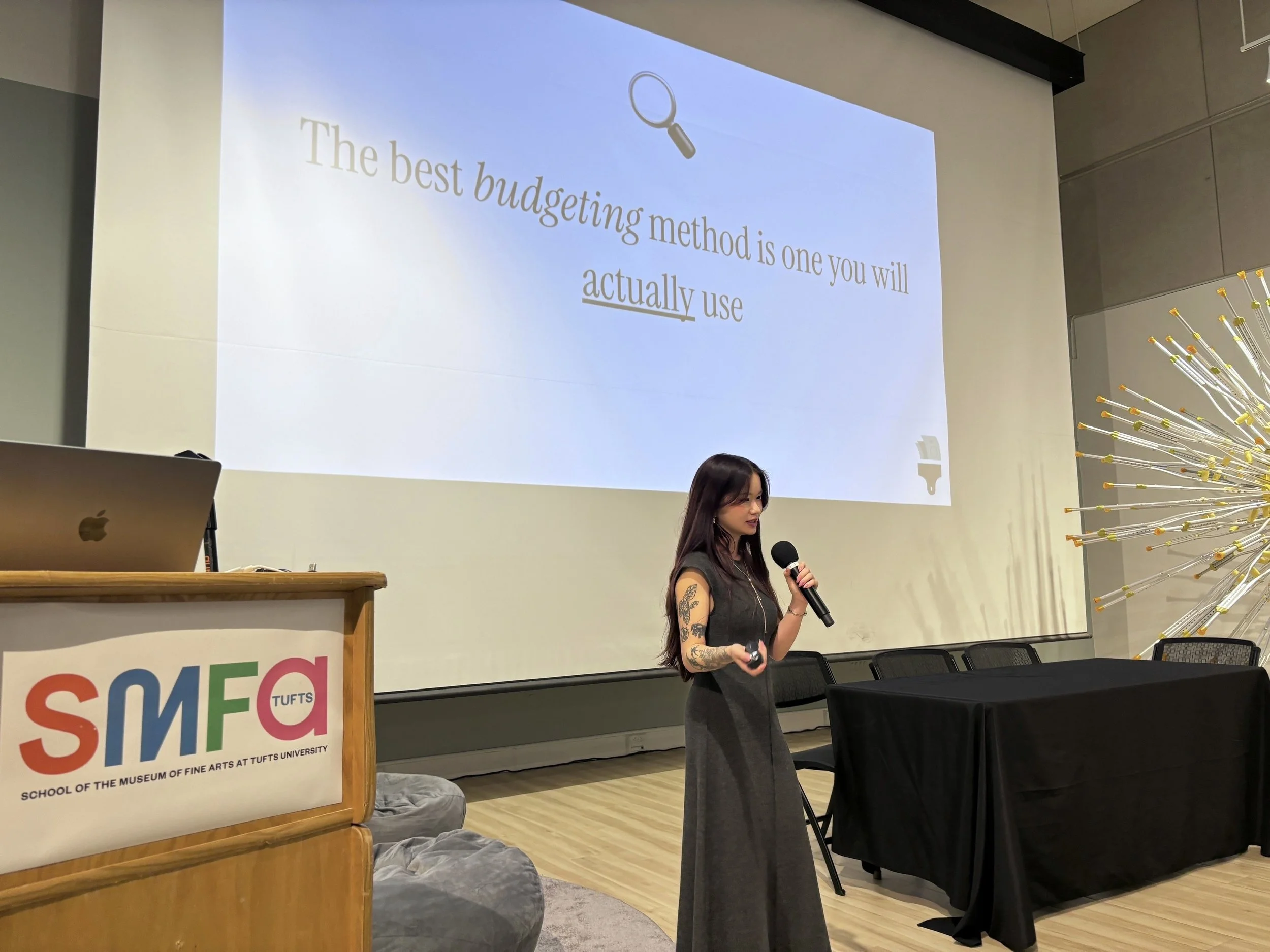Building Your “First” Budget
A picture of me from a recent talk at SMFA at Tufts!
One of my first questions when it came to money was: How do I build a budget that actually works?
I tried everything, downloaded the apps, built a color-coded Google Sheet, and made categories for every little thing. It looked great… until real life happened. Suddenly I needed pricey supplies for class, or my friends invited me out for ice cream, and that “perfect” budget went straight out the window.
Here’s what I eventually learned: a good budget isn’t about perfection, it’s about awareness.
You don’t need fancy software or complicated spreadsheets to get started. In fact, I recommend starting simple.
For one month, just track what’s coming in and what’s going out. You can do this in a notes app, on paper, or even by scrolling through your bank transactions once a week. The goal is to get a clear picture of where your money actually goes, not where you think it goes.
Once you know your patterns, you can start shaping a budget that fits you, not the other way around. That’s where values-based budgeting comes in. It’s about spending on what truly matters to you, and trimming what doesn’t. If art supplies or good coffee fuel your creativity, keep them in! But maybe you realize you don’t actually care about the subscription you forgot you were paying for.
There’s no one right tool, just the one you’ll actually use. Some people love apps like Mint or Monarch; others prefer a physical planner, cash envelopes, or a simple “three-category” system: needs, wants, and goals.
The key is consistency. Start small, stay curious, and give yourself room to adjust. A budget isn’t a restriction, it’s a map. And like any good map, it helps you figure out where you are, where you want to go, and how to get there without getting lost.

